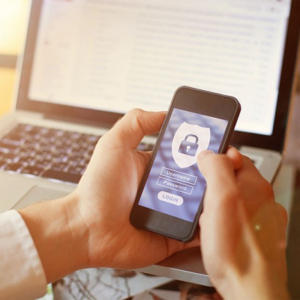Protecting Yourself from QR Code Fraud
Reading Time: 2 MinutesLast Updated: April 18, 2025
 Quick Response codes, better known as QR codes, are a very popular way to get information. QR codes are scannable barcodes that will direct you to a website.
Quick Response codes, better known as QR codes, are a very popular way to get information. QR codes are scannable barcodes that will direct you to a website.
There are many legitimate and helpful uses for QR codes, from paying for parking to viewing a restaurant menu. But since scammers often use QR codes to carry out their schemes, it’s important for you to learn how to spot a fake!
Scammers create QR codes to trick people into visiting a fraudulent website or downloading malware that compromises their personal information.
For example, scammers may:
- Cover official QR codes with fake ones on parking meters, menus, or magazines.
- Send QR codes via email or text message pretending to be from delivery companies.
- Request that you confirm your information due to suspicious activity on your account using imposter QR codes.
- Place harmful codes on social media advertisements.
QR codes may look genuine, but they can redirect you to fake websites designed to steal your personal information. Here are some tips to avoid related scams.
Verify the Source
Before scanning a QR code, make sure it comes from a trusted and reliable source. Legitimate QR codes from SSA will always send you to a safe and secure ssa.gov webpage.
Inspect the Code
Scammers may use tactics that mirror a legitimate QR code. Take a moment to examine the QR code closely. Look for any signs of tampering, unusual colors, or misspellings. If something seems suspicious, it’s best to avoid scanning the QR code.
Be Cautious of Unsolicited QR Codes
Avoid scanning unsolicited QR codes received via email or text message. Be aware of codes from unknown sources. We will never send a QR code via text or email asking you to confirm your information.
Be Aware of Urgent Requests Using QR Codes
Fraudsters often pretend to be government officials and use fake QR codes to defraud people. For example, a scammer may pose as a Social Security employee claiming that you have an outstanding debt or a problem with your account and demanding immediate payment. The scammer may send fake QR codes via text or email requesting the payment. Remember, Social Security will never request any form of payment using a QR code.
Stay Informed
Stay up to date on the latest QR code fraud and scams. Follow trusted sources such as cybersecurity blogs, news outlets, and official government websites for updates.
QR codes are an easy and convenient way to get information, but it’s important to remain vigilant when using them.
For more information, you can review the Federal Trade Commission Consumer Alert, Scammers Hide Harmful Links in QR Codes to Steal Your Information, and the Better Business Bureau website.
You can report suspected Social Security imposter scams to the Office of the Inspector General’s website. We encourage you to learn more about fraud and scams on our Protect Yourself from Scams webpage.
Please share this with friends and family – and post it on social media.
Did you find this Information helpful?
Tags: data privacy, fraud, scams
See CommentsAbout the Author
Comments
Comments are closed.

Angela D.
Is it true that we’re going to get money monthly payments I have been hearing things and reading things about we’re supposed to get some payments to help us through this hard time
S.D.
Hi, Angela. Thanks for reading our blog and for your question. We will not know about the next Cost-of-Living Adjustment (COLA), or the amount of the 2025 COLA, until late October. That’s when the Department of Labor releases information on inflation for the past year. Any increase will begin with benefits received in January 2025. For more information about the COLA, check out our website and fact sheet. We hope this helps.